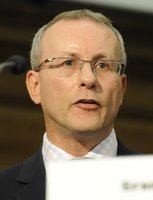Owen Walker discovers how the Thomas Miller pension scheme introduced absolute return funds to its defined contribution (DC) default option to provide members with a better savings experience
The Thomas Miller scheme’s decision to introduce absolute return funds to its DC default were driven by the negative reaction by members to their 2009 annual statements.
But it took until August this year for the changes to be fully implemented, and the scheme advised other DC plans considering similar moves to take their time so members were comfortable with the change.
Absolute return funds – factors to consider
Charges – Absolute return funds are actively managed and therefore bring higher fees than passive funds, typically 100-150 basis points more
Manager diversity – Thomas Miller used two fund managers to avoid the risks of one manager underperforming
Timing – it took Thomas Miller two years to implement the changes, which group pensions director Grant Lore said was essential to communicate the changes to members and make sure the managers could react to demand
Grant Lore (pictured below), group pensions director at Thomas Miller, said this was particularly relevant where fund charges would increase, as had happened at his scheme.
“Spend time communicating and presenting the change to members,” he advised. “Allow people to ask questions then and give time for the providers to implement the funds.”
He added: “The transition need to be carefully thought through.”
Reasons for change
The Thomas Miller scheme initially had two default funds: a growth fund and a pre-retirement fund. The growth fund had 50% invested in passive UK equities and 50% invested in passive global non-UK equities.
There was some life-styling built in, with the members gradually switched to the pre-retirement fund in their final eight years. They would eventually retire with 25% of their funds held in cash and 75% invested in bonds.
But in summer 2009 there was a lot of negative feedback from members after they had received their annual statement and discovered their investments had performed badly.
“In my role I get more member contact than most,” said Lore. “You get to see the members in and around the office when they get their statements.
“What concerned me was we could spend a long time discussing with them the logic of the long-term benefits of investing in equities. But this could lead to even less engagement.”
The scheme decided to redesign the default funds to reduce the amount of volatility experienced by members.
 Following discussions with the scheme’s consultant, LCP, the decision was made to implement absolute return funds which would look to smooth out the volatility by investing in a range of asset classes, including equities, fixed income and alternatives.
Following discussions with the scheme’s consultant, LCP, the decision was made to implement absolute return funds which would look to smooth out the volatility by investing in a range of asset classes, including equities, fixed income and alternatives.
Steve Delo, independent trustee and chief executive of PAN Governance, said: “One of the big challenges for DC investment is trying to come up with something that will deliver returns without the volatility, while making sure members can understand it and have some ability to control their destiny.”
He added: “The ideal default is what members want. What members want is a fund that will go up in line with equities when equities are going well, and go up with cash when equities are going down. Unfortunately that is hard to design.”
Challenges with absolute return funds
When the redesign was fully implemented on August 1 this year, two absolute return funds were added.
The new growth fund was 25% invested in the Standard Life Global Absolute Return Strategies fund and 25% invested in the Newton Real Return fund. The remaining 50% was invested in the previous strategy of 50% passive UK equities and 50% passive non-UK global equities.
The addition of the two actively-managed absolute return funds inevitably meant the fund fees increased, but Lore said he felt this was justified given the reduction in volatility.
“Fees increased and we made it quite clear in letters and presentations,” he said.
“The reasons we did this were to reduce the chance of a bad event having a big impact, and reduce the chance of different people get very different experiences depending on when they start and stop investing.
“This should hopefully lead to more even outcomes across the membership.”
The reason only 50% of the default fund was invested in absolute return strategies was to reduce the cost for the membership, while the reason for using two fund managers was to reduce the impact if one underperformed.
Lore revealed there had been a few members who had switched from the new default funds to the previous passive-only option, which is still available to members.
These had been younger members who felt they should be fully invested in equities and could cope with volatility.
But there had also been a number of members who had previously self-selected their funds, but moved into the new default option because they liked the volatility protection.
Delo said the success of the change would be down to how predictable the returns turned out to be. “If a fund delivers what it is expected to deliver, it is easier to communicate it to members,” he added.






















